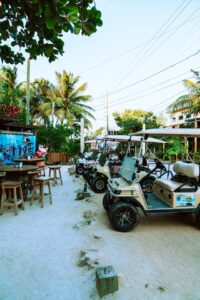Hurricane Insurance in Belize, like other Caribbean nations that experience hurricanes on occasion, is needed. Hurricanes can cause extensive damage in cayes and coastal regions if unpreparedness exists for these events.
On November 2nd, Category 1 Hurricane Lisa passed over Turneffe Atoll and initiated its insurance program’s first payout of $175,000 for immediate reef repairs. This experience demonstrated both parametric insurance’s value and how a regional risk pool can play an invaluable role.
Homeowners and Businesses
Belize’s coastal areas are extremely susceptible to hurricanes due to their distinct topography, with severe damage being done each year by these powerful storms. Due to this risk, the nation decided to relocate its capital from Belize City to Belmopan and require its citizens and visitors to evacuate before any hurricane path is determined. Homeowners and businesses can protect themselves by purchasing homeowners’ or business owners’ insurance policies.
Belize, due to its remoteness, may not experience frequent Category 5 hurricane impacts; however, even one major event can disrupt regular living and tourism and have long-term repercussions for both its economy and environment. Belize also faces frequent flooding and storm surge issues in low-lying coastal areas; nonetheless, it has strong coping capacities with an extensive network of disaster risk management systems in place to respond effectively.
At an affordable rate, property and homeowner’s insurance in Belize are readily available, and dependable coverage is provided through local companies that are reinsured with North American and European carriers; hurricane deductibles tend to be set at five percent while fire coverage usually requires no deductible at all. Unfortunately, Belize’s public sector rarely makes use of traditional non-life policies; only Ministry of Works equipment and central government buildings have traditional non-life policies, although comprehensive catastrophe risk coverage would prove beneficial for them as well as parastatals.
Belize as a small island nation must exercise caution when responding to climate change risks, lest over-reaction leads to costly capital investment misallocation and leads to miscalculation. However, to meet its adaptation and mitigation goals it must attract substantial private investments, with official sector financial involvement crucial in attracting funds for bankable projects. Belize must strive to secure foreign budget financing, preferably concessional financing, while simultaneously strengthening its capacity to attract private investments in priority sectors. Support can come through sustained efforts to strengthen legislation and frameworks within a country. They should also consider renewing their commitment to CCRIF SPC’s excess rainfall parametric policy while exploring options to tailor it according to local conditions.
Travelers
Since 1930, Belize has been affected by sixteen hurricanes since 1930; eight were considered major events, meaning they made landfall or made significant impactful damage. Even non-major storms may cause significant flooding and wind damage; due to Belize being located along the Caribbean Sea, it makes them even more likely to impact.
Travelers visiting Belize should secure travel and medical insurance policies before traveling there, which should include emergency evacuation coverage to cover costs related to transporting them safely should a hurricane or natural disaster force them from their accommodations.
Belize’s low-lying coastlines, rising sea levels, and tropical climate make the country extremely susceptible to flooding, storm surge, and other disasters. Furthermore, most national health facilities are situated in areas that are at high risk of flooding during hurricane season due to heavy rains or natural hazards; PAHO/WHO is supporting Belize in improving preparedness for and response to emergencies by retrofitting national referral hospitals such as Karl Heusner Memorial Hospital, Matron Roberts Hospital, and Cleopatra White Polyclinics as smart health facilities.
Road conditions in the country are deplorable and accidents are all too frequent. Drivers tend to act irresponsibly and disobey traffic laws, leading to chaotic conditions on the road. Cyclists also often ignore rules when riding bicycles which poses a significant danger to travelers.
Due to rising levels of gang violence and drug activity in Southside Belize City and other urban areas, extreme caution must be exercised in urban areas such as Southside Belize City. As there is an ongoing threat of kidnapping, robbery, and murder there, as well as no hurricane shelter or evacuation assistance from the U.S. Embassy Belmopan for tourists visiting tourist areas U.S. citizens traveling to cayes or coastal regions of Belize must ensure adequate insurance coverage is secured before travel; travelers should ensure accommodation is located away from flood zones or poorly developed areas before visiting Belize.
U.S. Citizens
Hurricanes are not the only natural calamities Belizeans fear; however, they pose an especially great threat given their country’s susceptibility. Hurricanes strike frequently across the southwestern Caribbean region, but Belize’s position along the Atlantic’s hurricane belt has shielded it from annual hits for the past 133 years; nonetheless, it remains susceptible to serious damage and loss of life in an event of such magnitude.
As such, the country has engaged in extensive planning to reduce risk and build resilience, including climate change adaptation into the development agenda and working closely with development partners on environmental reform.
Belize must mobilize substantial private sector investments to meet its climate adaptation investment requirements, while budget foreign financing should continue at or above current levels, and contingent Financing arrangements should be expanded to provide insurance coverage.
Belize is working with international development partners to enhance its climate change resilience as Hurricane Season approaches, with particular attention paid to increasing climate resilience through regional risk pools for catastrophic parametric insurance coverage and catastrophic parametric payouts from CCRIF SPC (formerly CRIFC). As part of these initiatives, recently Turneffe Atoll received its first-ever payout from CCRIF SPC at $175,000 after Hurricane Lisa passed through.
Belize’s government is strengthening travel and health risk management with additional tools and partnerships, including working closely with the World Bank on creating a unique risk transfer product for tourism-related losses – the first ever developed in Central America! Providing travelers with additional coverage against trip cancellations or medical costs while on vacation.
Belize may not be the ideal vacation spot for people worried about hurricanes, but it makes an excellent tropical escape and escape from winter weather. From beautiful beaches to lush forests and diverse wildlife – Belize has something for everyone – just make sure that before traveling anywhere, a comprehensive travel and health insurance policy is purchased to allow for an enjoyable journey!
Insurers
As a small island developing state, Belize is especially susceptible to hurricanes and natural disasters. Its low-lying coastline and climate leave it exposed to flooding, storm surge, and other weather-related events which may be compounded by sea level rise. Nearly all national health facilities are situated in areas of high vulnerability; therefore, the Government continues to invest in strengthening preparedness and response capacities for emergencies that arise.
Although only two Category 5 hurricanes have ever made landfall in Belize since records began, due to its location along the Caribbean coast it remains vulnerable to hurricanes and tropical storms of all categories. Furthermore, climate change is expected to strengthen hurricanes over time while moving faster with greater intensity levels than before.
As such, Belize must invest in building resilience and mitigating risk from natural hazards, particularly hurricanes. One approach would be increasing disaster insurance coverage so property owners can recover from damage or economic losses caused by adverse events such as hurricanes.
As well as hurricane and flood insurance policies, the Government of Belize is working on creating a range of catastrophe-related products to provide additional coverage against hurricanes and floods – such as tropical storm and earthquake insurance and landslide and flood catastrophe insurance products for commercial properties and residential homes alike. When combined, these policies offer homeowners, businesses, and institutions protection against some of Belize’s most frequent natural catastrophes – hurricanes and floods.
On November 2, 2022, Hurricane Lisa passed through Turneffe Atoll in Belize as a Category 1 storm and precipitated its first payout under the parametric insurance program – mobilizing resources within 14 days for reef repair and restoration initiatives led by local partners like Turneffe Atoll Sustainability Association.
This initial success demonstrates the value of an innovative insurance solution, that leverages global expertise in catastrophe risk assessment, modeling, and management to build a more resilient Belize. Eventually, coverage may extend to cover additional hazards or sectors like agriculture, aviation, and water resources.




